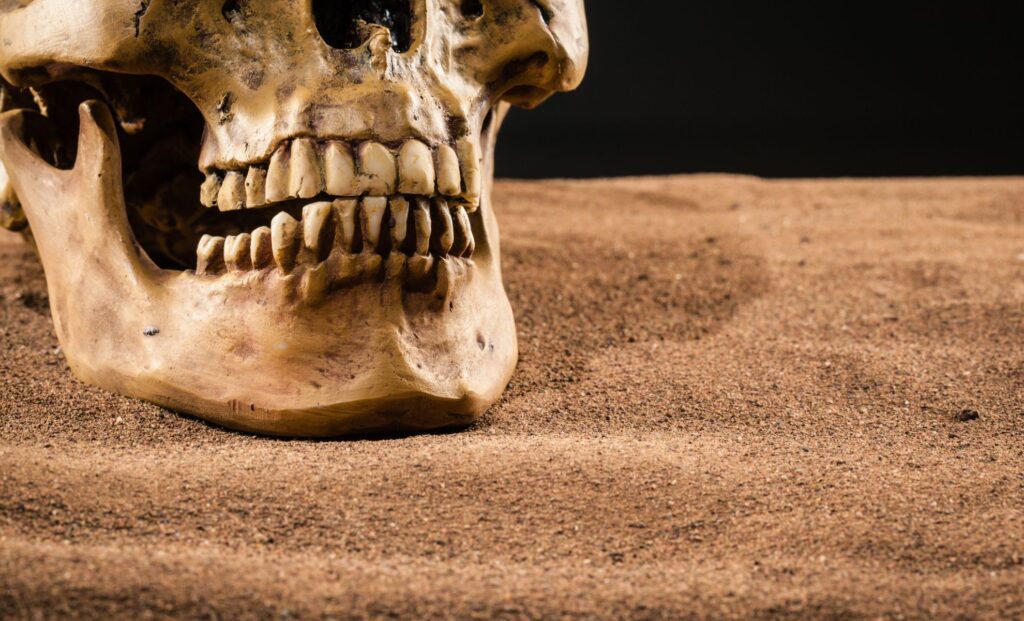By analyzing proteins from 2-million-year-old tooth enamel, researchers uncovered sex differences and unexpected genetic variation within P. robustus. These findings, some of the oldest molecular data retrieved from Africa, are reshaping ideas about early human ancestry.
A Cousin with a Powerful Bite and Enduring Mystery
Discovered in 1938 in South Africa, Paranthropus robustus has puzzled scientists for nearly a century. It walked upright, had a compact but muscular frame, and was equipped with an oversized jaw built for grinding hard foods. Its teeth, covered in thick enamel, stood out even among other early hominins.
According to a detailed report published by Palesa P. Madupe and colleagues, this species, or perhaps group of species, lived between 2.25 and 1.7 million years ago, alongside other early human relatives such as Australopithecus africanus, A. sediba, and later Homo habilis.
For decades, researchers debated whether the fossil record of P. robustus reflected a single, variable species or multiple related ones. Until now, the warm African climate had prevented any successful recovery of ancient DNA to help solve this mystery.
Proteins Replace DNA in Ancient Fossil Analysis
Unable to rely on DNA, a team of scientists turned to paleoproteomics: the study of ancient proteins that can survive where DNA cannot. Using mass spectrometry, they extracted enamel proteins from four P. robustus teeth unearthed at Swartkrans Cave, a key site in South Africa’s Cradle of Humankind.

The analysis revealed something unprecedented. According to the team behind the research, two fossils belonged to male individuals and two to females. This was determined by identifying sex-linked proteins like AMELY, which only appear in males. As the authors noted, this method provided more accurate sex determinations than previous assumptions based solely on tooth size.
The study also identified a rare case of heterozygosity, two different versions of the same gene, in a 2-million-year-old fossil. Specifically, one individual carried both amino acid variants of a gene called enamelin, which plays a role in forming tooth enamel. Until now, this level of genetic detail had never been detected in such ancient proteins.
Signs of Genetic Diversity within the Same Group
The enamelin gene appeared in different forms across the four individuals. Two of them carried an amino acid sequence shared with modern humans, gorillas, and chimpanzees. The other two featured a version not yet seen outside Paranthropus. According to the research published by Madupe et al., one fossil even carried both forms, marking the first known case of heterozygosity detected in enamel proteins of this age.


This genetic variation didn’t align neatly with physical traits, leading scientists to consider that P. robustus might not have been a uniform population. Morphological comparisons of the enamel-dentine junctions, a part of the internal tooth structure, suggested that one male fossil was more similar to specimens from the Drimolen site than to those from Swartkrans or Kromdraai, where the species was first described.
These anatomical differences, taken with the protein variations, hint at deeper population substructure or even multiple species under the Paranthropus name. As noted in the study, tooth shape and protein differences alone aren’t enough to confirm separate species, but the clues are significant.
Preserving Fossils While Advancing African Science
Throughout the study, the research team emphasized careful conservation. Fossil sampling was minimal, and work was done in close coordination with South African authorities and institutions. According to the University of Copenhagen and partners involved in the project, local scientists and labs played essential roles from planning to execution, ensuring that the research benefited African communities and scientific institutions.
This collaboration represents a broader movement to shift more scientific work, and credit, back to the places where fossil discoveries are made. As the researchers point out, developing high-level molecular techniques within Africa is not only a scientific gain but a step toward decolonizing paleontology.
This protein-based approach has already opened new paths to explore early hominin diversity. By tying molecular data directly to physical traits, the study introduces a new framework for understanding how ancient populations varied, and what that means for the human story.

